Ushering In The New Year With New Year’s-Themed Classic Movies
Keeping with tradition, or its semblance, my year end list will once again forgo comment on the past year of new film releases and instead look back upon the past 125 years of film history. And in reducing that century and a quarter to ten selections, I have decided this year to further narrow, or possibly broaden, my focus to the type of movie I am most likely to watch when compiling these year end lists: the New Year’s movie.
With a keen awareness of the passing of time, the best New Year’s movie shows the past, present, and future merging on one’s viewing screen of choice, acknowledging with equal parts joy and uncertainty the stroke of midnight, the re-winding of the clock, and the flip of the calendar. While some of these selections may not be immediately familiar to a broader audience, all are the very best this classic movie fan has yet encountered in terms of an individual film’s seasonal relationship to one year giving way to the next and, perhaps more importantly, in the hope of new beginnings. As such, my time travel list will proceed chronologically through the past movie century of New Years, revisiting in movie terms the annual procession of time marching ever-forward.
This year more than any in recent memory, perhaps, I along with many may need reminding, and possibly reassuring, that no one really knows the future, and through consideration of the past one may even come to terms with bleak-seeming moments in the present. “You have to compare”, as one of my all-time favorite movies puts it, so I hope you’ll join me as we look at ten past movie New Year’s, along with a mysterious “bonus”, and the spirit of renewal that has perpetually animated and reanimated them towards our own coming New Year.
The Phantom Carriage
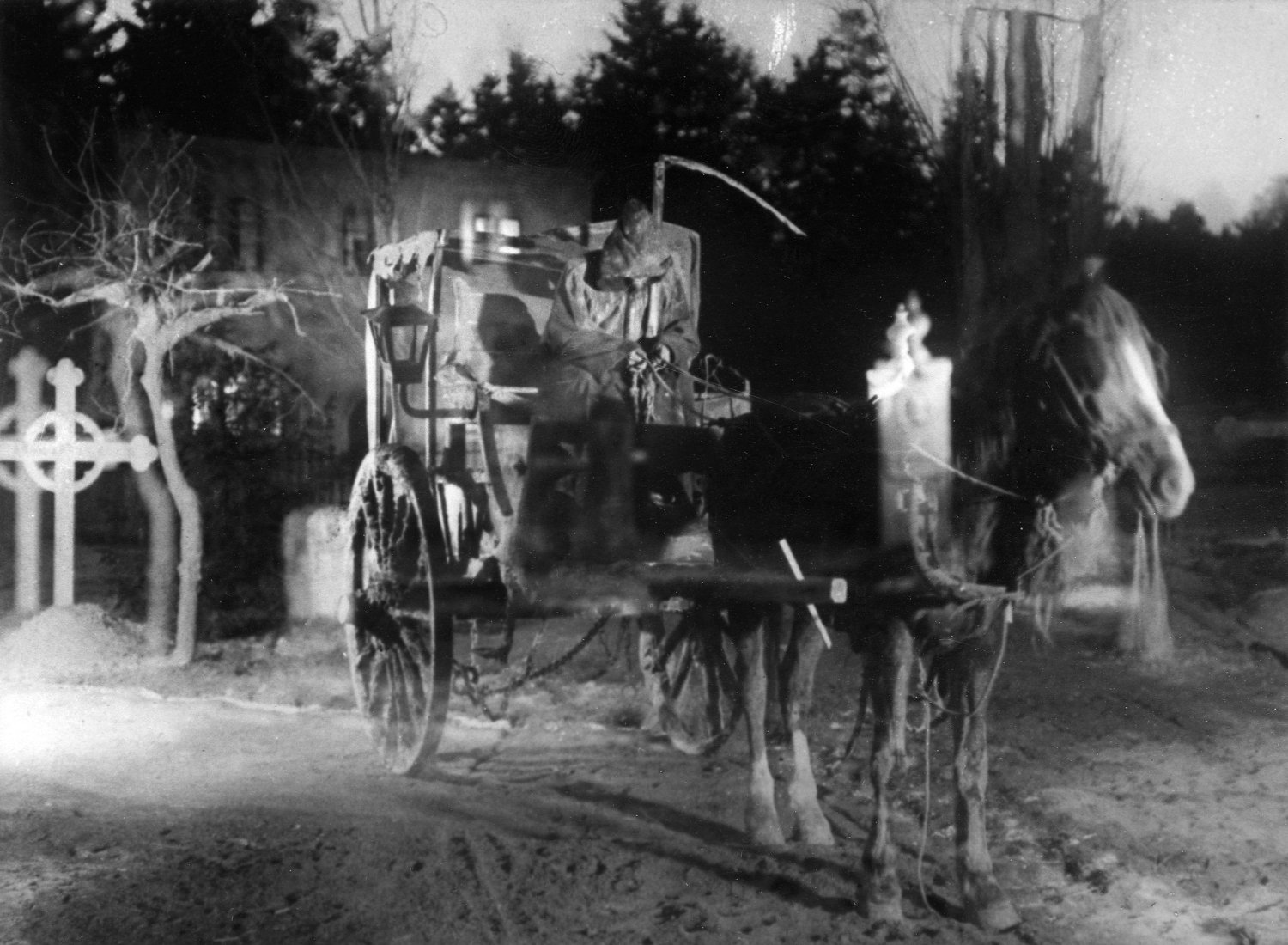
Our oldest New Year’s selection evokes the spirit of its title to arrive precisely 96 years later (its Stockholm premiere is listed by at least one source as “January 1, 1921”; or possibly this is a wishful legend?) for the mortal appointment every man (and woman) must keep! A drunken brute, cavorting in a graveyard on a cold New Year’s Eve, has been killed accidentally by one of his dissolute companions on the fateful stroke of midnight, and so is condemned for the entirety of the New Year to collect and dispose of the film-transparent shades of all the world’s recently departed. That creepy premise, with a healthy nod to Charles Dickens, proves a time-altering retrospective for the man in spiritual question, as the past events of his wayward life, his corruption of his adoring younger brother, his (truly) shocking ill-treatment of his estranged wife and children, and especially his spurning of a saintly, dying Salvation Army worker unfold in complicated flashback towards the undeserving wretch’s moment of reclamation. Director and star Victor Sjostrom’s timely and time-obsessed ghost tale is a narrative and stylistic triumph, offering the nascent medium a complex and mature screen fantasy that derives its unique power from a bracing supernatural atmosphere combined with heightened screen realism. Unlike anything in my viewing experience, this Swedish silent ode to the New Year is one even casual viewers will be unlikely to forget.
The Gold Rush
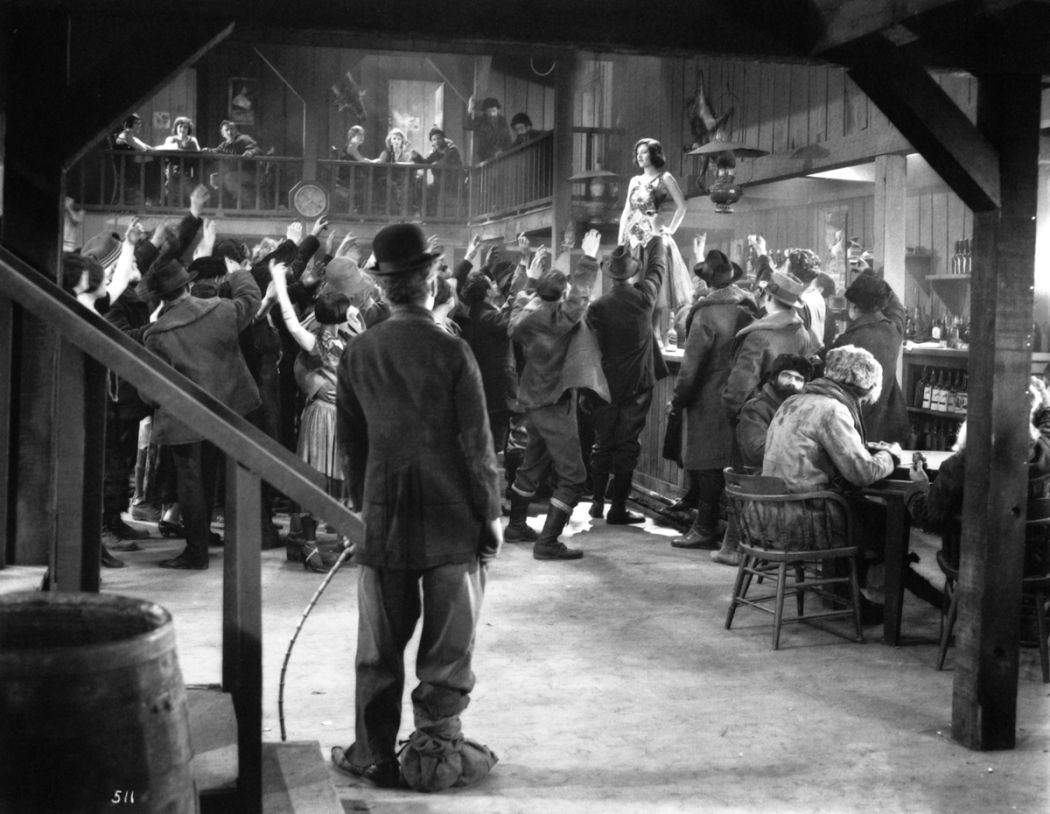
Charlie Chaplin’s best-remembered silent slapstick feature improbably mines the frozen north, prospecting, and even the historical Donner Party tragedy for pure comic gold! (Sorry, really couldn’t resist.) Featuring some of the Little Tramp’s most memorable comedy set-pieces, the pitiful pair of Charlie and his outsize companion (Mack Swain) prepare their Thanksgiving feast of the former’s right shoe, the winter storms howl through the lonely cabin as the big guy hungrily mistakes little Charlie for a giant chicken, Charlie inimitably performs his charming dream-dance of the rolls, and the gaping, icy maw of oblivion is narrowly averted at the film’s exciting climax for “9 reels of comic joy” that seem as fresh and funny as when first viewed 91 years ago. Balancing the dark comedy, however, is a genuinely touching and tender love story between Charlie and Klondike dance-hall girl Georgia (Georgia Hale), who jokingly accepts poor Charlie’s invitation to a New Year’s Eve dinner and of whom Charlie becomes devastated when she, his heart’s desire, callously stands him up. Alone, dejected, and not to mention forlorn, the solitary, eternally outcast figure of the Little Tramp slowly paces around the corner of the dance hall and – with his back framed in the entranceway – silently watches the bustling crowd of revelers usher in the New Year with wine, good cheer, and a rousing chorus of Auld Lang Syne. The perfect cinematic reminder from the master of silent film comedy, in pathos-filled, screen-ironic counterpoint, that not everyone enjoys a Happy New Year.
Cavalcade
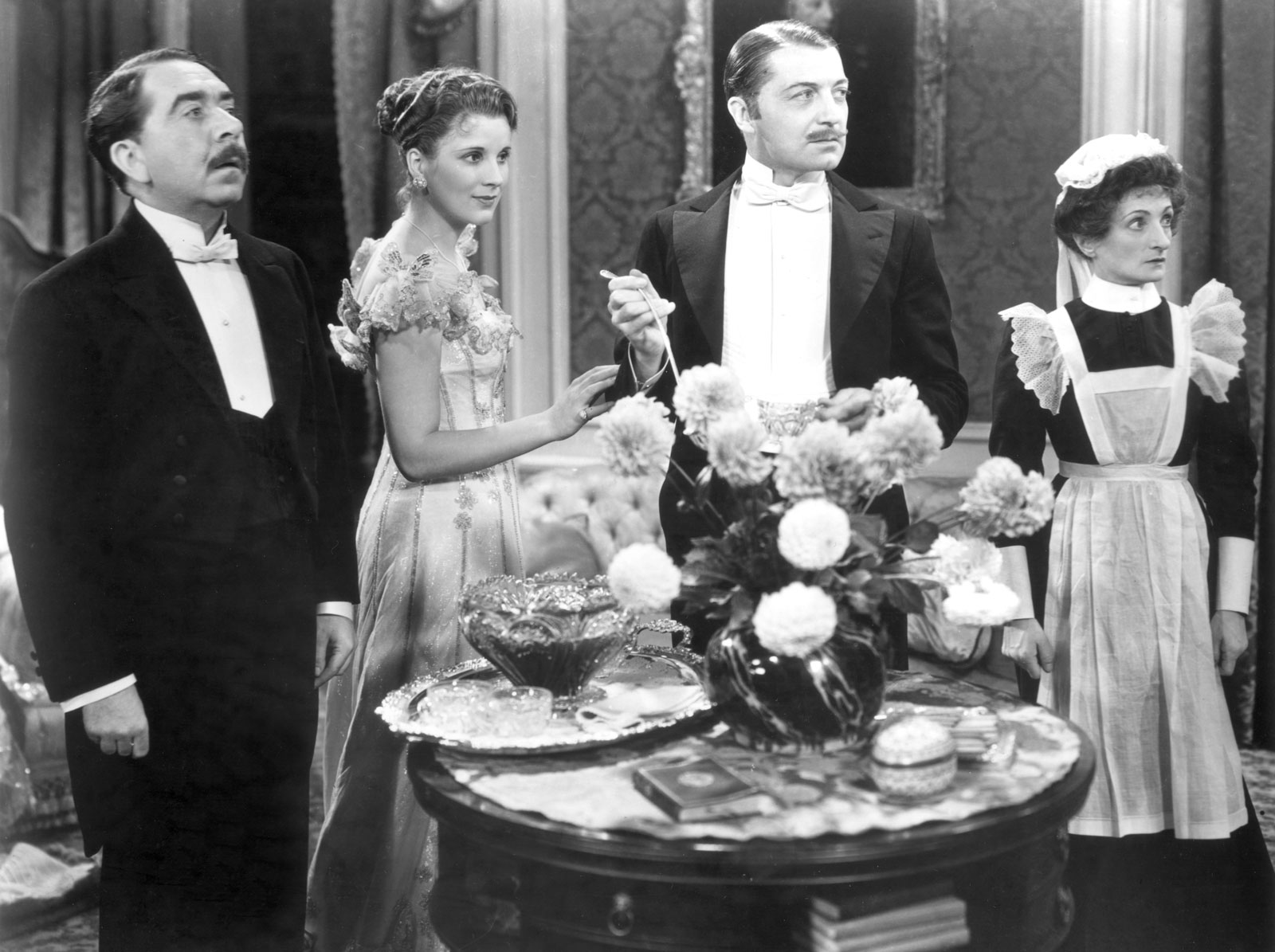
Playwright Noel Coward’s 1931 British historical drama was realized in 1933 as a lavish screen spectacle and subsequently won that year’s Academy Award for “Outstanding Production” (i.e., “Best Picture”). Fox Films’ later addition of “Twentieth Century” to their title was made possible, one could joke, by this timely epic, which dramatizes the first third of the twentieth century through its intimate parallel story of the aristocratic Marryot family and their erstwhile servants, the Bridges; covering such major events as the death of Queen Victoria, the second Boer War, the sinking of the Titanic, the first World War, the Roaring Twenties, and the Great Depression from the intertwining drama of the two British families on opposite ends of the social scale. An unjustly overlooked and even forgotten film among Oscar winners, Cavalcade arrived on screens as a self-proclaimed “Picture of the Generation”, which possibly earned its reputation no favors regarding what we refer to today as “awards bait”. But the acclaim was in many respects justified, especially when considered from the symbolic procession of its title and the grand sweep of years Cavalcade so masterfully displays. From its opening scene on New Year’s Eve 1899 to its closing scene on a New Year’s Eve thirty-some years later, a viewer can’t help but feel at the end of its two-hour running time that one has somehow lived along with the Marryots and the Bridges through their ups and downs, hopes and dashed dreams, loves and losses through many (many) memorable New Years.
Holiday
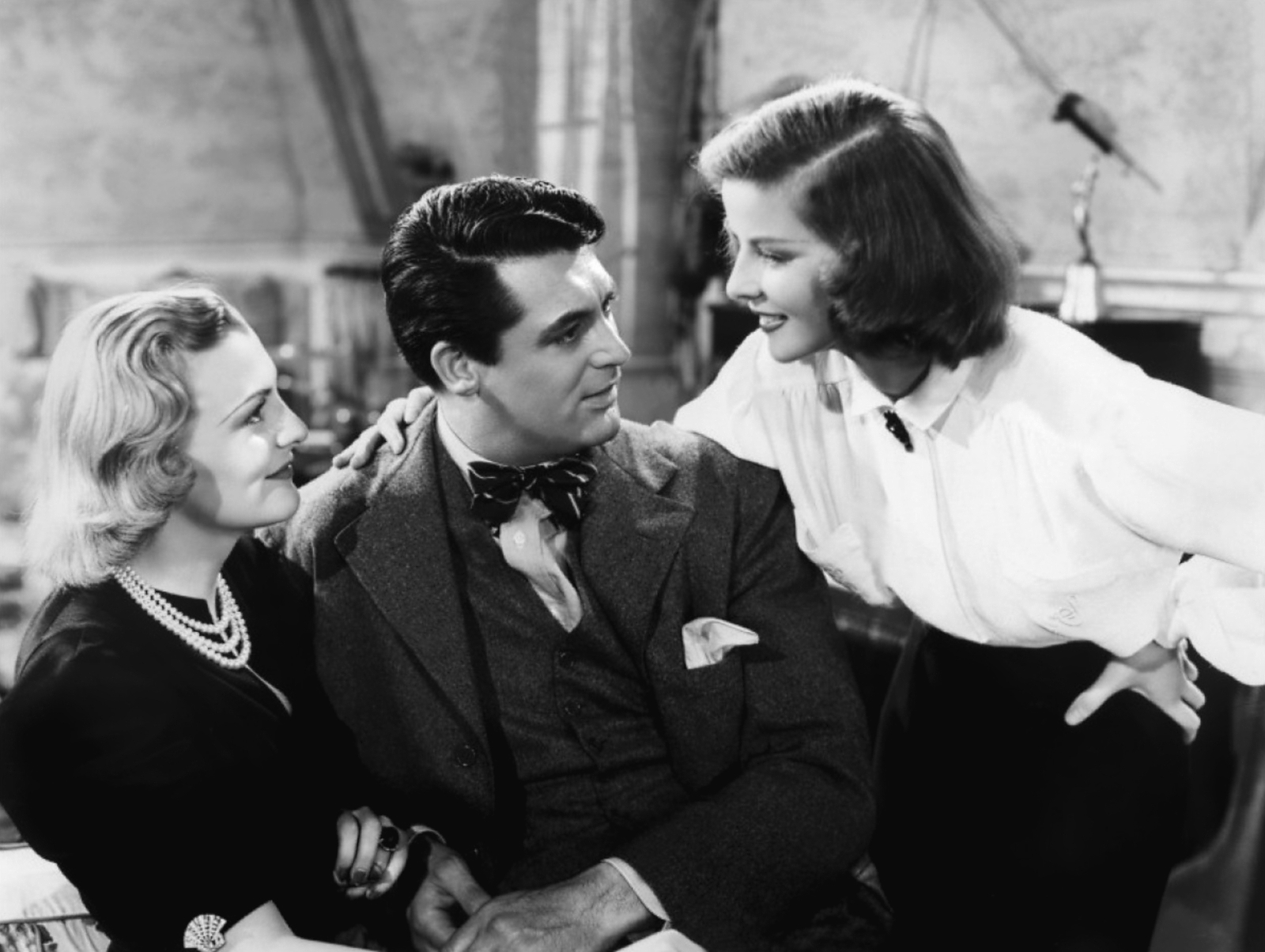
Though not as readily identifiable as the earlier My Man Godfrey (1936) or the later The Philadelphia Story (1940), fans of Classic Hollywood, black and white romance, and screwball comedy will hopefully thank me for bringing to their New Year’s attention the most timely selection fitting those apt descriptors. In their second film together, Cary Grant and Katharine Hepburn star in this 1938 adaptation of a Philip Barry play, which, like the playwright’s later The Philadelphia Story, was adapted by screenwriter Donald Ogden Stewart and directed by George Cukor. And like the earlier smash My Man Godfrey, Holiday also features a dizzyingly complicated comic romance between two lovers from opposite social classes. But where the twist in My Man Godfrey is that it turns out the romantic pair are from the same social class after all, but ultimately decide to forgo their class privileges, in Holiday the able young man from the lower classes arrives at the wealthiest house in New York affianced to a haughty young woman, only to find himself irresistibly drawn to her more suitably “black sheep”, down-to-earth sister. With a wonderful cast of supporting players including Edward Everett Horton, Jean Dixon, Lew Ayres, and Henry Daniell, the New Year’s Eve climax of this film at a lavish, three-story, Fifth Avenue engagement party is a masterful movie set-piece – equal parts comedy and romance – where the major romantic leads finally realize their true feelings for each other, but also fully realize the emotional mess such feelings will soon cause.
Sunset Boulevard
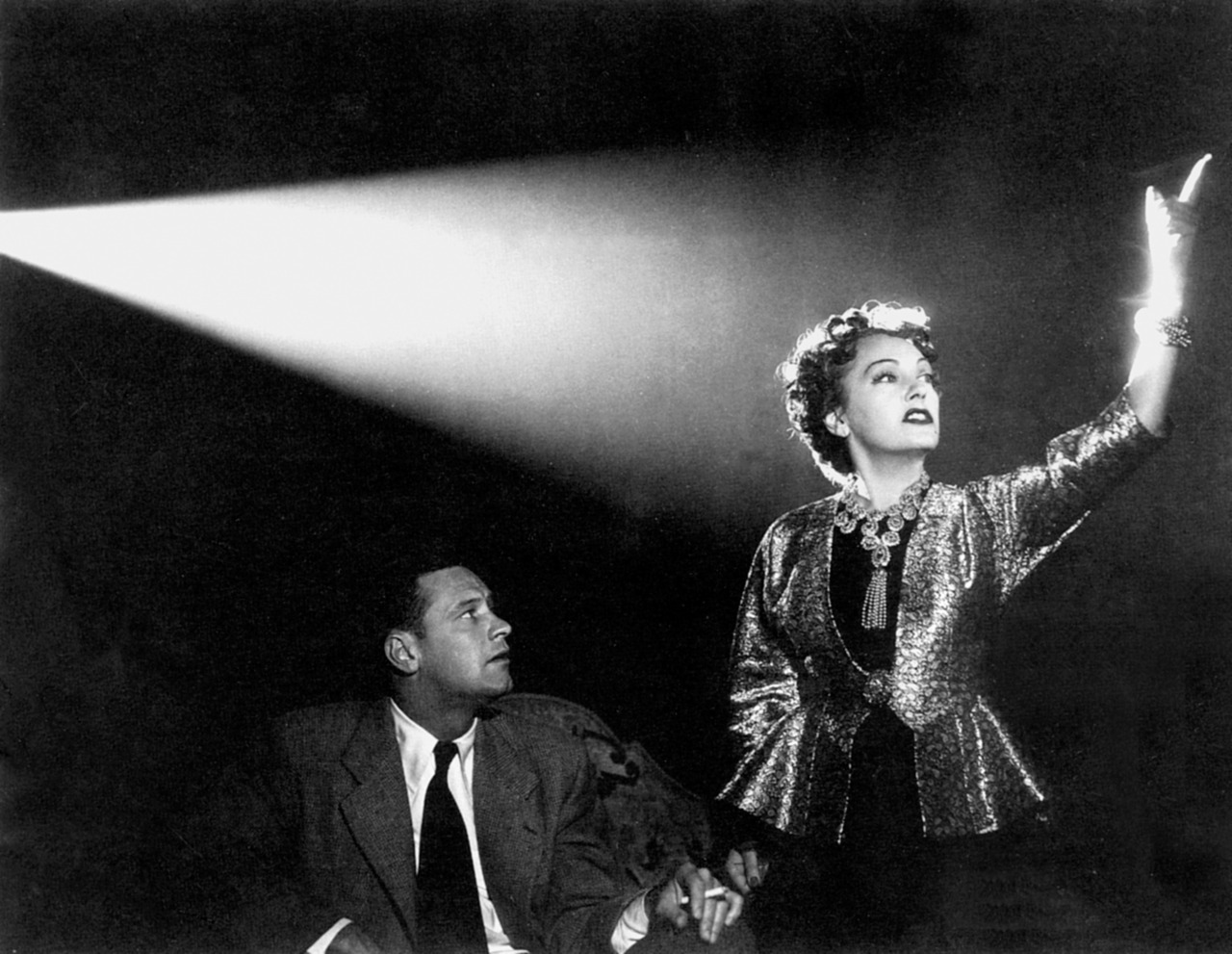
As possibly the most recognizable classic movie on this New Year’s list, Billy Wilder’s acid-tinged love letter to Hollywood – its past, present, and future – comes fully equipped with enough critical baggage for this most humble of film reviewers to refrain from further comment beyond this sentence. But I would like to at least counter 66 years of received opinion that Sunset Boulevard – as a film, a performance piece, a dramatic exercise – somehow contains no emotional core at the hollow heart of its callously clever premise, and that the tragedy of silent screen star Norma Desmond is solely played for the hard, unfeeling chuckles of those “heartless so-and-sos” who would take tabloid-like pleasure in her downfall. Waxing the tiles, blindfolding the orchestra, and laying a sumptuous spread across a yards-long display table, down-on-his-luck screenwriter Joe Gillis is embarrassed to realize that Norma has prepared this lavish New Year’s Eve in her circa 1927 ballroom solely for him; and, after the ensuing argument, flees in his dinner tails, white tie, and tux (his silver watch fob caught on the ornate metalwork of the front gate on the way out) to a more carefree New Year’s party of his contemporaries… before subsequent tragic events inevitably call Joe back to Norma for their respective and mutual doom. Pity, remorse, and material/emotional neediness are poor qualities to base a relationship on, but this dramatic New Year’s evinces a mature understanding of and sympathy for the dark mysteries of the human heart.
The Apartment
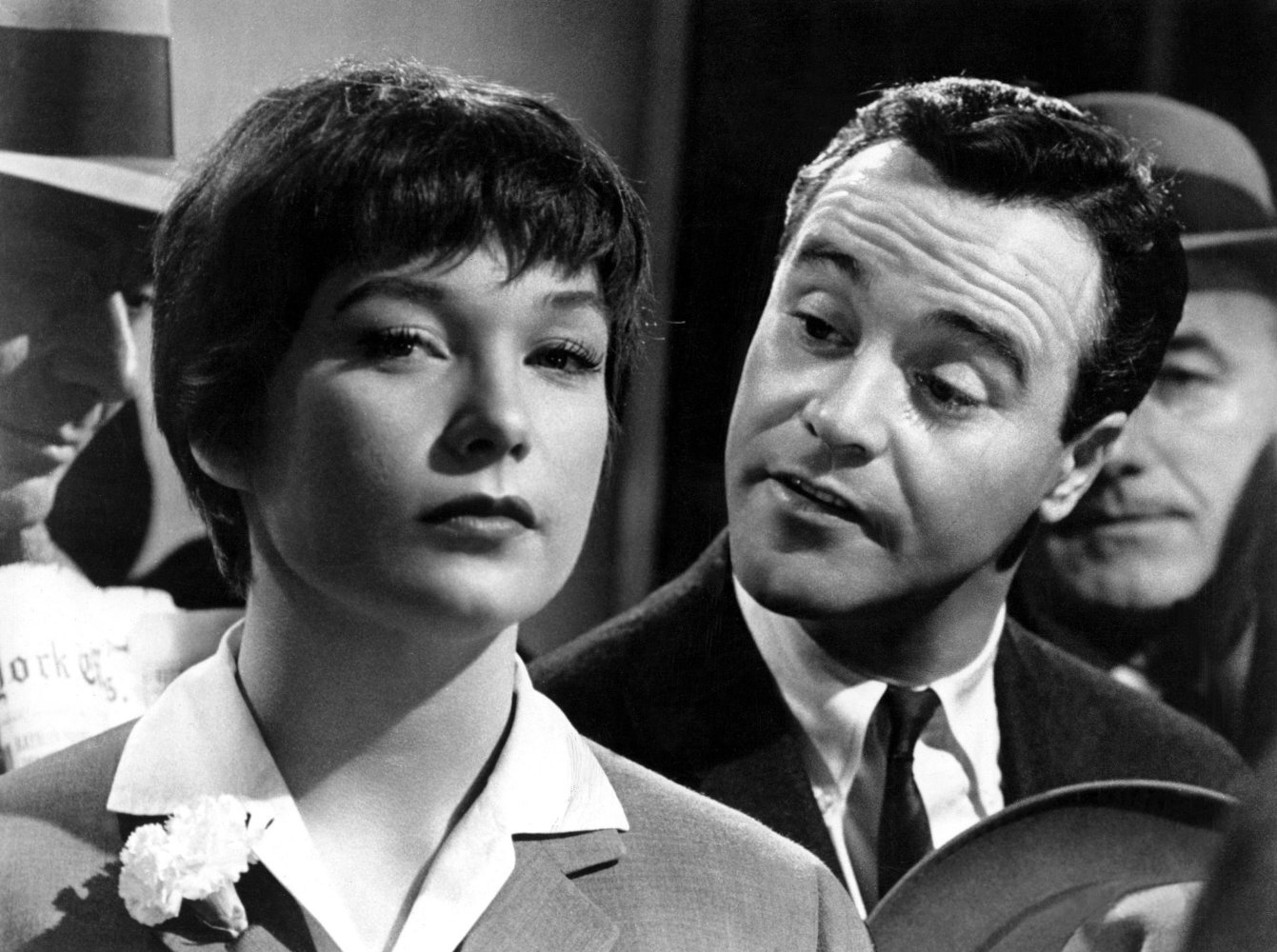
C.C. (“’C’ for Calvin, ‘C’ for Clifford; however, most people call me ‘Bud’”) Baxter toils at a skyscraper insurance building in downtown Manhattan by day and lends out his Lower East Side apartment to philandering supervisors from the office by night. Fran Kubelik, who recently sacrificed her longer hair for a more pixie-ish, shorter length, is the pretty elevator operator with whom Baxter trades the occasional flirtation. Smooth-talking personnel director Jeff D. Sheldrake, as the final element, story-wise, takes material advantage of Baxter’s apartment and emotional advantage of Miss Kubelik’s trusting nature in Billy Wilder’s Oscar-winning comedy-drama of “those who take, and those who get took”, set during the Halloween to New Year’s Eve sweep of the holiday season. With its late Eisenhower/early Kennedy-era boozeups, office parties, casual infidelities, and “ring-a-ding-ding” lingo – it should be no surprise the film was a major influence on TV’s Mad Men (2007-15) – what’s most surprising about The Apartment, and even moreso given its director’s reputation for extreme cynicism (Double Indemnity [1944], Ace in the Hole [1950], among many other hard-edged treats), is the fragile and even touching story of two lonely souls who find each other ’round the holidays at the heart of it all. “Shut up and deal”, delivered on New Year’s Eve by a couple who haven’t yet gotten past “Mister” and “Miss”, is a justly famous final line for a director equally famous for his films’ final lines and, like the film itself, conceals an emotional warmth beneath its tough-talking facade.
Trading Places
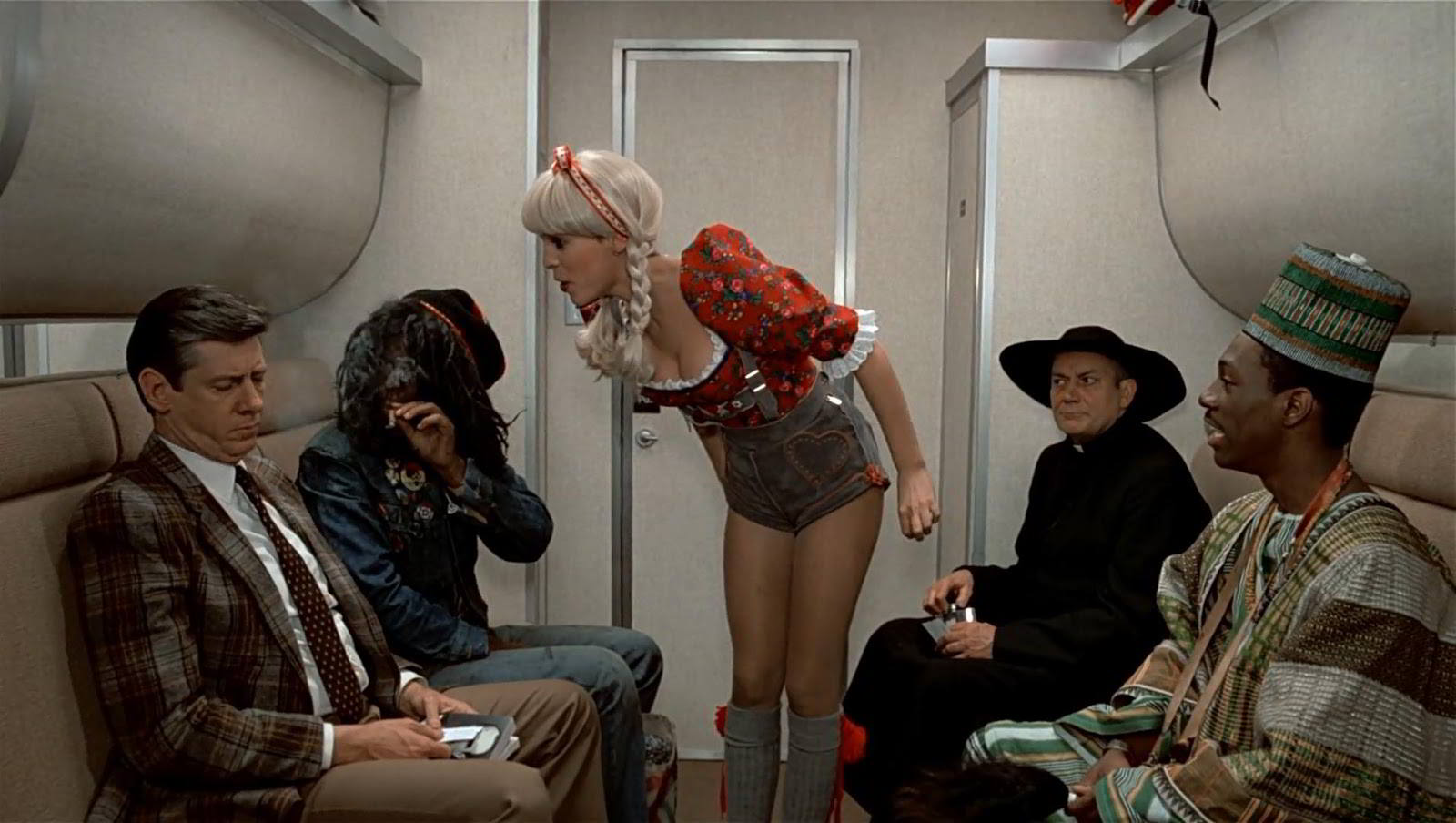
Opening on bleak candid shots of the City of Brotherly Love, accompanied by Mozart’s The Marriage of Figaro, the credits sequence for John Landis’ 1983 social comedy Trading Places is possibly the “new comedy” era of National Lampoon, Second City, and Saturday Night Live‘s most stirring bid for comic respectability. Comedy by definition isn’t respectable, however, so it is of course refreshing when this R-rated, very eighties favorite comfortably settles into the barrage of language, nudity, and off-color (no pun intended) situations that was soon to be introduced to children of the mid-eighties (such as myself) in an unrecognizable edited-for-TV form. Trading Places, or as my very first issue of Mad Magazine, and its Mort Drucker-illustrated movie spoof, would have it, “Trading Races”, juxtaposes high and low, wealth and poverty, and (literally) black and white in a topsy-turvy premise that might have served elderly classic movie co-stars Ralph Bellamy and Don Ameche back in the 1930s – minus the aspect of race – as well as it does comically mismatched stars Dan Aykroyd and Eddie Murphy in the 1980s. Among ridiculous comedy set-pieces, however, nothing beats a New Year’s Eve, Philadelphia-bound midnight train run involving drunken revelry, stolen documents, offensive costumes, and a caged female mountain gorilla; and ending, somehow, with another era-specific favorite, indispensable eighties villain/asshole Paul Gleason (as the odious Clarence Beeks), taped inside a gorilla suit and locked in with the real gorilla as its “mate”. Rude and crude, yes, but like most inappropriate humor from my extreme youth, still undeniably funny.
Radio Days
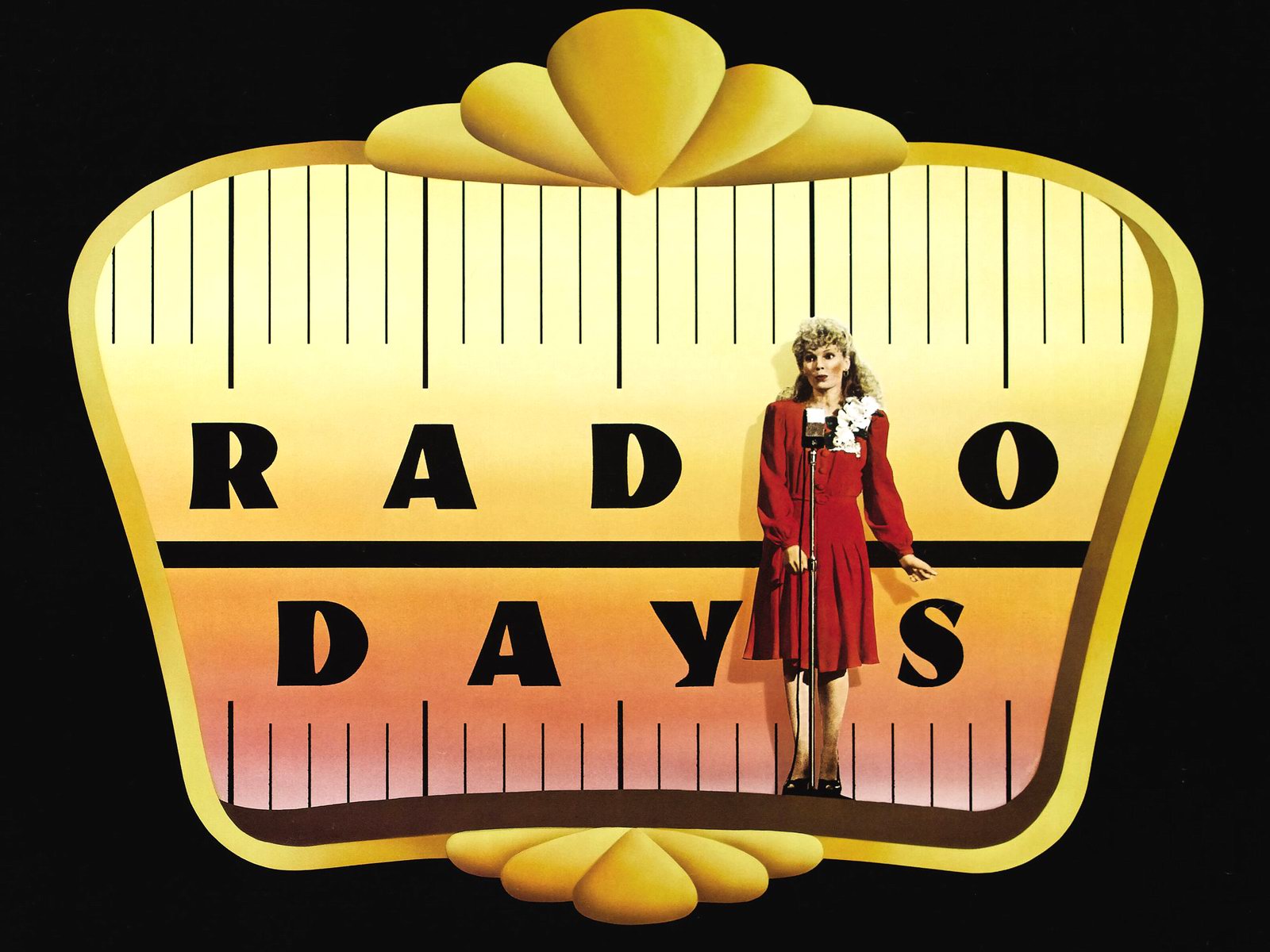
Woody Allen’s semi-autobiographical, self-narrated reminiscences of growing up in World War II-era Rockaway Beach, while firmly plugged into the music, variety programs, news features, and unclassifiable aural miscellany of radio’s heyday, should I feel be shown ’round the clock on New Year’s Eve in much the same way that the Bob Clark/Jean Shepherd A Christmas Story (1983) is marathon-looped on Christmas. My second favorite Woody movie (after 1983’s Broadway Danny Rose) juxtaposes the lower-middle class, extended family milieu of his Queens upbringing – including constantly-arguing parents, a fish-loving uncle, a love-lorn maiden aunt, “socialist” next-door neighbors – with Manhattan-set “radio stories” he, as the narrator, has purportedly collected as an adult – including a short and shrimpy hero of an adventure serial, the sophisticated husband-and-wife hosts of a “cafe society” show, and the hilarious, extended story of a pretty-but-dumb cigarette girl who rises to a top radio commentator – for a brisk 90 minutes of unbridled, bittersweet nostalgia. In its lovely New Year’s Eve-set final scene, where the radio stars gather on the neon-lit, snow-falling roof of a trendy downtown nightspot, Radio Days imparts as warm a glow as the bulbous tubes that lit up those Art Deco-curved sets of old. No film or director better captures that indescribable “New Year’s” feeling, where one looks wistfully forward to an uncertain future from the vantage point of a quickly passing year, thus making Woody Allen’s Radio Days essential New Year’s viewing.
Metropolitan
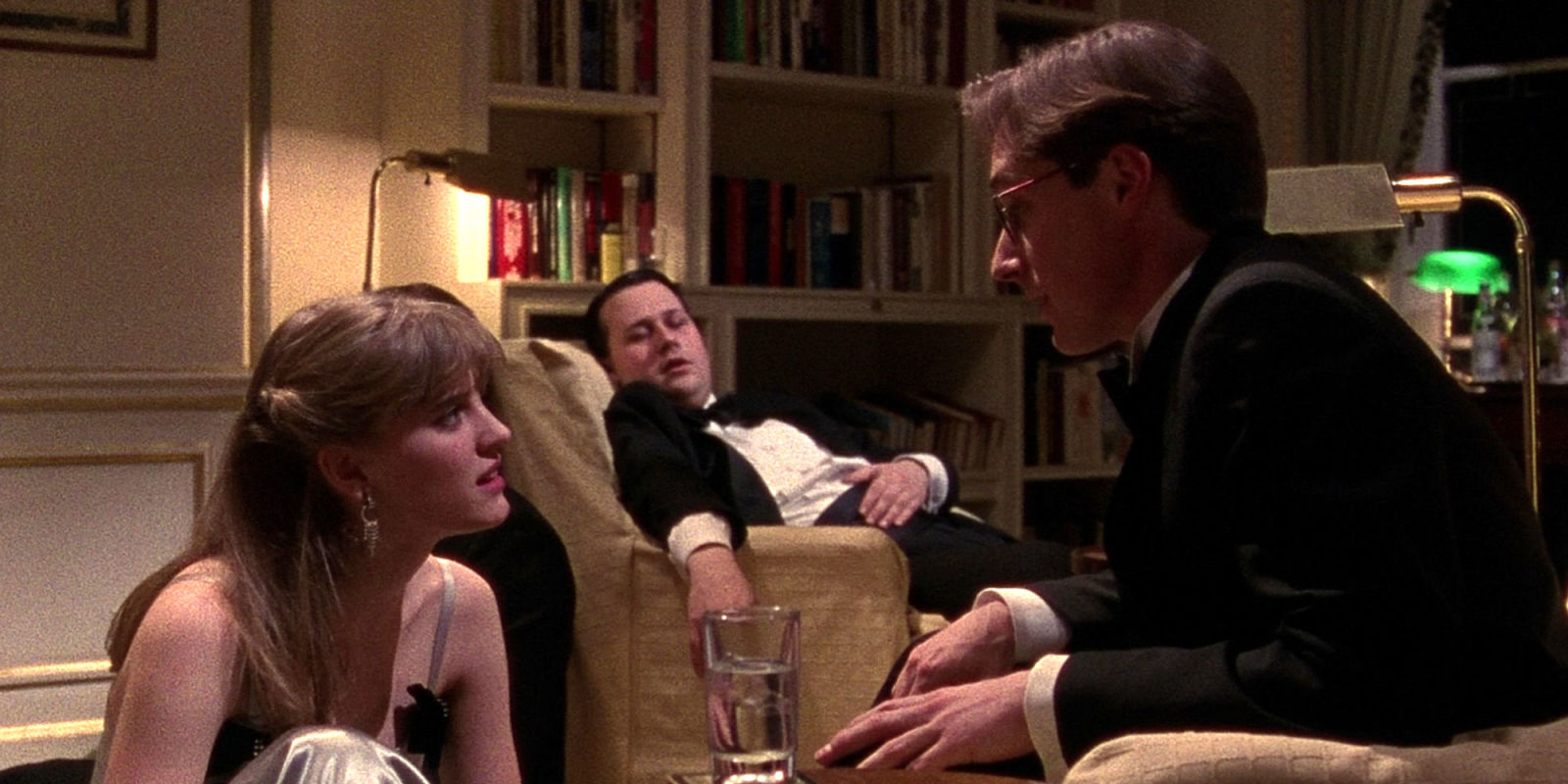
Equally nostalgic, though equally undefinable, is director/screenwriter Whit Stillman’s 1990 debut film, which arrived on the emerging indie film festival circuit of its era to puzzled-but-delighted reviews, limited-though-farflung distribution, and somehow reached a broad-yet-rarefied audience of appreciators. “Do these people even exist?” was quickly followed by “Have they ever?” as the Metropolitan cult quickly grew, thanks to a home video cover featuring attractive young people in (and out of) formal wear engaged in unknown acts of debauched revelry, and soon those “in the know” were ceaselessly spouting the film’s bottomless reservoir of wit (Whit-wit?), including such memorable phrases as “the Sally Fowler Rat Pack”, “the urban haute bourgeoisie (or UHB, pronounced ‘ub’, for short)”, and “a serious shortage of male escorts”. Narrowing that broadening gap is one Tom Townsend, who gains entrance to the exclusive Upper Manhattan set of Sally Fowler and her upscale cohorts during the wintry Christmas-to-New Year’s period of the downtown debutante season. With cynical-yet-cheerful Nick Smith, earnest-but-downbeat Charlie Black, and lovely-though-uncertain Audrey Rouget rounding out the major participants – the games, conversations, and social maneuverings as entertaining as they are scintillating – Metropolitan is that rare seasonal delight that actually improves upon multiple viewings. In what I have described as a “happy marriage between Jane Austen and P.G. Wodehouse”, the defiantly unprolific Stillman (to date, in a career spanning 26 years, he has made a scant 5 features) makes us care about a class of people we will probably never meet, and probably didn’t even know existed, with unmatched style, humor, and grace.
The Hudsucker Proxy

The standing, passing, and procession of time has been the implicit concern of many of these New Year’s films, so it is extremely fitting that our final (list-proper) selection should be so squarely obsessed with the past, present, and future. From its opening shot tracking through New York’s New Year’s night skyline towards the giant clock of the Hudsucker building to the gears of that same instrument being frozen at the stroke of midnight, ushering in the magically as-yet unknown year of 1959, the Hudsucker slogan written above its inexorably time-ticking hands of “The Future Is Now” both literally and figuratively dominates the film’s 111-minute running time. Simultaneously 20 years ahead and 35 years behind in terms of style, tone, and subject matter, the Coen Brothers first contemporary flop was greeted with confusion and derision upon its initial release, but I would warrant has gained (meta-)much in the intervening years. The Frank Capra-by way of-Preston Sturges story of Norville Barnes and his meteoric rise and fall (and rise and fall and rise again) from the street pavement to the 58th floor (and down and back and up again) is satirical enough for the latter strain of classic film comedy and endearing enough for the former to earn plaudits from any viewer canny enough to recognize Katharine Hepburn-by way of-Rosalind Russell’s clipped, mid-Atlantic delivery in Manhattan Argus‘s “fast-talking career gal”, Amy Archer. (“I’ll stake my Pulitzer on it!”-by way of-“Y’know, for kids!”) Film and cultural history have been the brothers’ gleeful playground the past 32 years, and their fifth film had been, to that point, their most arch and knowing creation yet; as it is, however, The Hudsucker Proxy remains especially timely and enjoyable on (hopefully) several successive New Years.
…
Top Hat

Moving, gliding, and, most accurately, dancing our way out of both time and this themed list, the hidden bonus track to 2016’s New Year’s Picks is occupied by that most elegant and ersatz creation of classic Hollywood, Ginger and Fred. More than any other artistic or cultural force, Astaire and Rogers, contra-respectively, dominated the gay dreams of the dark Depression in nine films made between 1933 and 1939; with the best tunesmiths of the era, including Irving Berlin, Jerome Kern, and George Gershwin, providing screen magical accompaniment as the dancing duo practically floated across impossibly lovely Art Deco sets, the urban-cosmopolitan visions of RKO resident art director, Van Nest Polglase. 1935’s Top Hat, the pair’s fourth film together, is their first of three films to be scored by the great Irving Berlin, who, in addition to the title tune (“Top Hat, White Tie and Tails”), bestowed seven other memorable numbers, including the immortal “Cheek to Cheek”. From its opening lyric “Heaven – I’m in Heaven –”, viewers are witness to Fred Astaire and Ginger Rogers’ most intimate song-and-dance routine, which moves from a crowded ballroom to a starry veranda for five minutes of gown-sweeping, tails-lifting, and floors-gliding screen paradise. Transcending time, space, and all the cares and troubles of this imperfect world, a sympathetic audience in 2016 is blissfully united with their viewing counterparts in 1935 even as Fred dips Ginger for their final backs-arched bow. A New Year’s treat like few others, classic cinema offers a marvelous retreat for those best able to respond to these black-and-white visions of earthly heaven.

